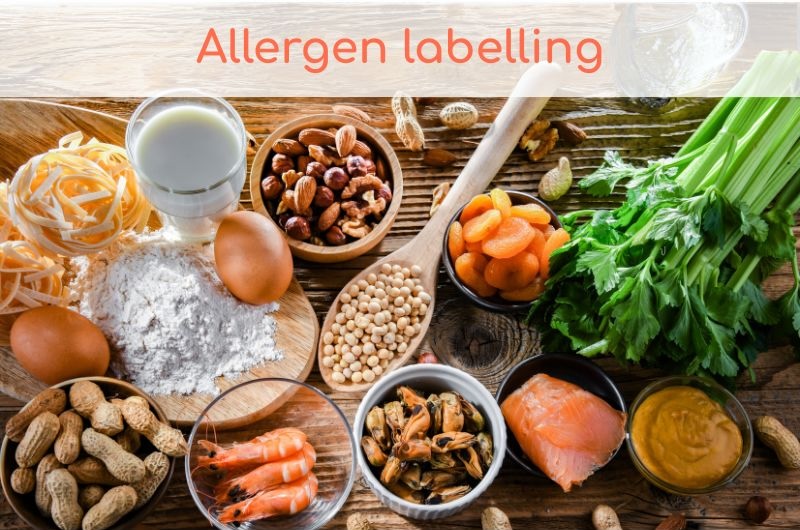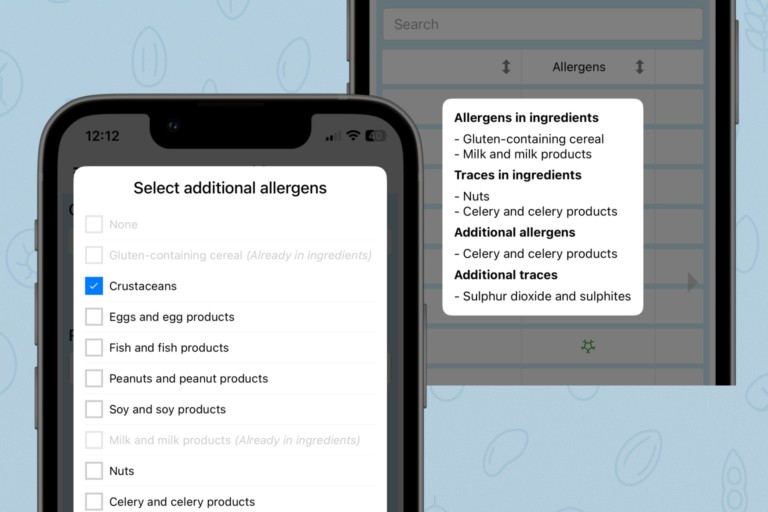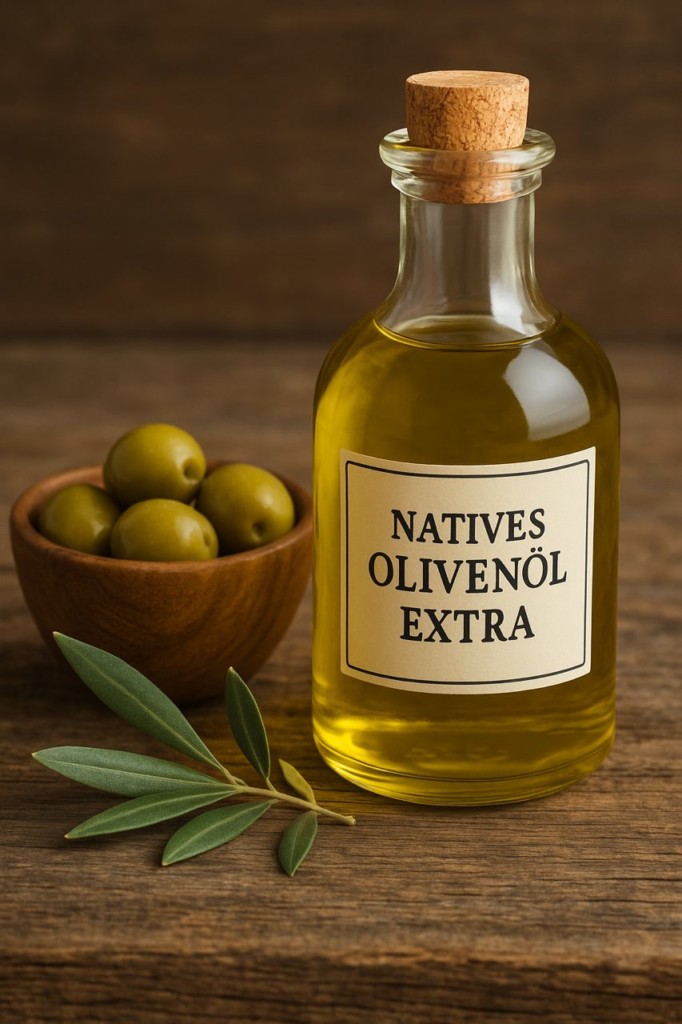
Providing accurate information on allergens is not only a legal obligation in the food industry but also an essential requirement for consumer protection and trust. In Switzerland, Germany, and across the EU, clear regulations apply to both pre-packaged and non-prepackaged (loose) foods. These rules affect restaurants as well as bakeries, pastry shops, confectioneries, butcheries, dairies, and other small food-producing businesses.
1. Legal foundations in Switzerland, Germany and the EU (as of 11 August 2025)
Principle: Allergens must be declared when they are used as an ingredient or processing aid.
- Switzerland
- Legal basis: Food Information Ordinance (LIV/OIDAI)
- Allergen labelling is also mandatory for non-prepackaged (loose) products.
- Written or oral information is permitted – oral information is only allowed if a written record is available at all times.
- Labelling must be provided in the official language of the place of sale.
- Germany / EU
- Legal basis: EU Food Information to Consumers Regulation (FIC/LMIV)
- Link to the EU Regulation: German: Verordnung (EU) No. 1169/2011 / English: Regulation (EU) No. 1169/2011
- Link to the regulation for the implementation of the LMIV in Germany (LMIDV)
- For prepacked foods, allergen labelling is mandatory throughout the EU. For non-prepacked foods, the form of information is determined by the Member States (Art. 44 LMIV).
- Written or oral information, always supported by written documentation.
- Oral information requires well-trained staff and up-to-date product lists.
- Special rule for sulphites: According to Annex II No. 12 of the LMIV, “sulphur dioxide and sulphites in concentrations of more than 10 mg/kg or 10 mg/l, expressed as total SO2, calculated for products as consumed or reconstituted according to the manufacturer’s instructions” must be declared.
- Legal basis: EU Food Information to Consumers Regulation (FIC/LMIV)
- Mandatory allergens to be declared: Currently 14 main allergens (including gluten, tree nuts such as almonds and hazelnuts, peanuts, milk, eggs, soya, sesame, lupin, celery, fish, crustaceans, molluscs, mustard, sulphur dioxide/sulphites).
2. Practical Differences Between Restaurants and Food-Producing Businesses
| Restaurants | Bakeries / Pastry Shops / Butcheries / Dairies |
|---|---|
| Frequently changing daily or weekly menus – constant updates required | Fixed recipes, but seasonal products and special offers require updates |
| Oral information often provided by service staff – strong training needed | Sales staff must be able to provide accurate information on request |
| High risk of cross-contamination in open kitchens and buffet areas | Risk mainly from simultaneous production of several allergen-containing products |
| Documentation must be flexible and updated quickly | Documentation can be centrally maintained but must be kept current in all outlets |
3. Precautionary Allergen Labelling – CH: Mandatory Above Threshold, EU: Voluntary
The labelling of unintended mixtures or contaminations of possible traces (“may contain …”) is not legally mandatory in the EU, whereas in Switzerland it is required once specified threshold values are exceeded. Nevertheless, it is increasingly coming into focus of:
- Official food inspections
- Audits according to IFS, BRCGS and FSSC 22000
- In their latest revisions, allergen management and cross-contamination prevention have been significantly tightened. Audits now often require a documented risk analysis as the basis for precautionary labelling.
- Industry and authority recommendations:
- Precautionary labelling only after a HACCP-based risk assessment
- Avoid generic statements such as “may contain traces of allergens”
- List only the allergens that are realistically present
- Switzerland-specific – LIV (Art. 11 para. 5):
- Switzerland has defined threshold values for so-called traces. Manufacturers must demonstrate that all reasonable precautions have been taken to avoid contamination during production.
- For unintended mixtures (traces), the following maximum levels apply in Switzerland, above which the indication “may contain traces of …” must be provided:
- Sulphites: 10 mg SO₂/kg or l
- Gluten-containing cereals: 200 mg gluten/kg or l
- Vegetable oils and fats with fully refined peanut oil: 10 g peanut oil/kg or l
- Lactose: 1 g lactose/kg or l
- Other cases: 1 g/kg or l – in each case based on the ready-to-eat food
- Below these thresholds, labelling is voluntary and not legally required.
- Exception for loose (non-prepacked) sales: Unintended mixtures (Art. 11 para. 5 LIV) do not have to be indicated in the case of loose sales (Art. 5 para. 1 lit. f LIV).
4. Practical Tips for Restaurants & Food-Producing Businesses
Preventing cross-contamination:
- Separate storage of allergen-containing and allergen-free ingredients
- Production sequencing – produce allergen-free items first, then allergen-containing ones
- Validate cleaning – e.g. with allergen rapid tests or surface swabs
- Train staff – regularly train service and sales staff in allergen management
- Complete documentation – immediately record any recipe changes
- Supplier communication – contractually agree that suppliers must notify you immediately of any recipe or allergen declaration changes, so updates can be reflected promptly in your records and sales materials
Ensuring reliable customer information:
- Always have up-to-date allergen lists available – digital or printed
- Oral information only if supported by written documentation
- For multi-site businesses: central data management with automatic synchronisation across outlets
5. Why Digital Solutions Are Becoming Indispensable
Rising requirements and the high documentation workload can now be managed efficiently with digital solutions.
With the Alcomo HACCP App, allergens can be documented seamlessly throughout the entire process chain:
- Goods reception: record and link allergen declarations from suppliers
- Production: automatically transfer allergens from raw materials to recipes
- Traceability: batch and allergen history accessible at any time

Conclusion & Recommendation
Whether in restaurants or food-producing businesses, correct allergen management is a legal obligation but also an opportunity to build trust and minimise risk.
Businesses that handle allergens, cross-contamination, and precautionary labelling transparently and precisely are best prepared for inspections, audits, and customer expectations.
With the Alcomo HACCP App, you can implement these requirements simply and efficiently.
➡ Learn more and digitise your allergen management today: Alcomo HACCP App – Hygiene & HACCP Documentation
Status: 11 August 2025





